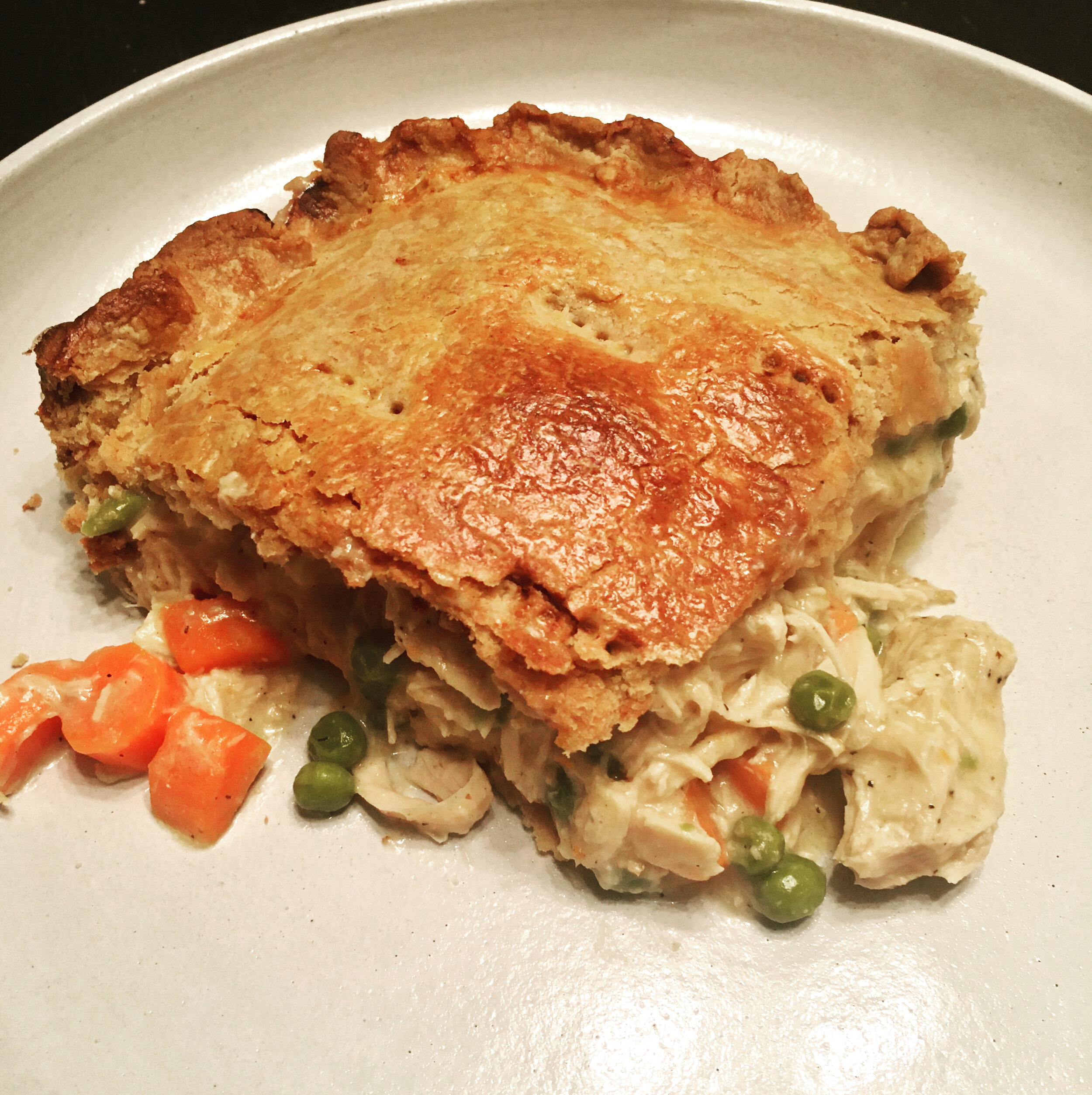Turkey or Chicken Pot Pie
Probably the very definition of comfort food, I think a good pot pie is my favorite meal ever. It does take a lot of work, but with some smart planning it can be successful without requiring much more effort than you might already be putting into your meals, and if you have a small family it can last for two or three days (although, it’s so good leftovers might suspiciously disappear). Anyone can make a pot pie from premade items, which is easier, but if you want it to taste spectacular and have as much nutrition as possible, the only way to make it is from scratch. This takes several hours to prepare, so plan ahead. Meals like this one work extremely well with my Niacin Therapy from Fuck Portion Control. If you’ve never made a pie before, it’s probably best to start with the apple pie recipe and be familiar with pie making before making this one.
POT PIE FILLING
1 whole roasted chicken or turkey (turkey is most flavorful).
1 whole yellow onion
1 parsnip
1 bag of peas (about 10 oz)
8-12 medium to large carrots
4 tbsp butter
1 tsp sea salt
3-4 bay leaves
1/3 cup spelt flour
1 pint of heavy cream (reserve several tbsp for brushing)
2 tsp pepper
SPELT PIE CRUST
Use my pie crust recipe from here, but increase the salt to 1 tsp.
First, roast the whole chicken or turkey. You can roast it the day before and use the leftovers for pot pie. But make sure you reserve enough meat to use in your pie. If you are going to use much of a chicken, maybe roast two at a time then eat one the day before you use the other to make pie. If you roast the same day, this process will take all day, so start it early. Directions for properly roasting a chicken are in my recipe for Chicken Soup. Roasting a turkey is the exact same process—poultry should never be soaked or brined, but roasted in salt and oil, though you can use a meat thermometer to monitor a turkey, it is also done when the skin is a great roasted brown color.
When you have your roasted bird, remove and set aside all the meat, and make the stock. Place the skin and carcass (and any giblets) in a large pot such as a dutch oven or stock pot. Add the onion, cut in half with the skin on, 4-5 carrots chopped large, bay leaves, and 3 tbsp salt. Fill the pot with water until it covers all the ingredients generously. Bring to low simmer, cover, and let cook for 2-3 hours. When making stock, the hottest part of the pot is actually the steam above the water, below the lid. This can scald and burn the ingredients if the water is boiling too hot, so it’s a good idea to turn the heat just below medium so that it is still a gentle boil but not just simmering or going to much.
In the meantime, prepare the pie dough as directed in my pie recipe. Set aside to rest (do not refrigerate unless it’s very warm in the kitchen, then only refrigerate for a few minutes at a time, to avoid the butter getting very hard). Then peel and chop the remaining carrots and the parsnip.
To a sauté pan add the carrots and parsnip with 1 tbsp salt, the pepper, and butter (4 tbsp), and cook over medium-high heat until the carrots start to go soft. Add the 1/3 cup flour and cook for another five minutes (do not burn flour). Remove from heat.
When the stock is done, strain it and discard all the solid contents. Add the cooked carrots and parsnip to the stock pot, then add 4-5 cups of stock, the cream (reserve several tbsp for brushing—if you forget, you can use an egg wash), peas, and shredded poultry meat (you can pull it apart with your hands as you put it in, while it cooks). Cook over medium-high heat until the mixture starts to boil. It should thicken quickly and noticeably, then immediately remove from eat and allow to cool.
When the filling is no longer hot (it shouldn’t be cold, but just above room temperature is great), Preheat oven to 375˚ F (190˚ C). Roll out the bottom piece of pie dough and use it to line a 9” x 13” casserole dish. Roll out the top piece, then add the filling to the dish, careful not to get any on the edges of the pie crust. Then place the top dough over, crimp the edges, and stab the top with a fork repeatedly to make air holes. Brush the top crust with a very thin layer of cream (or egg wash). Cover the edges of the pastry with strips of aluminum foil (this prevents them from burning). Then Bake for 1 hour and 15-20 minutes until the crust is very golden brown and the filling is sizzling out through the air vents and breaks in the crust. Make sure to remove the aluminum strips about 35 minutes into baking. Allow to stand for at least 15 minutes before serving.
